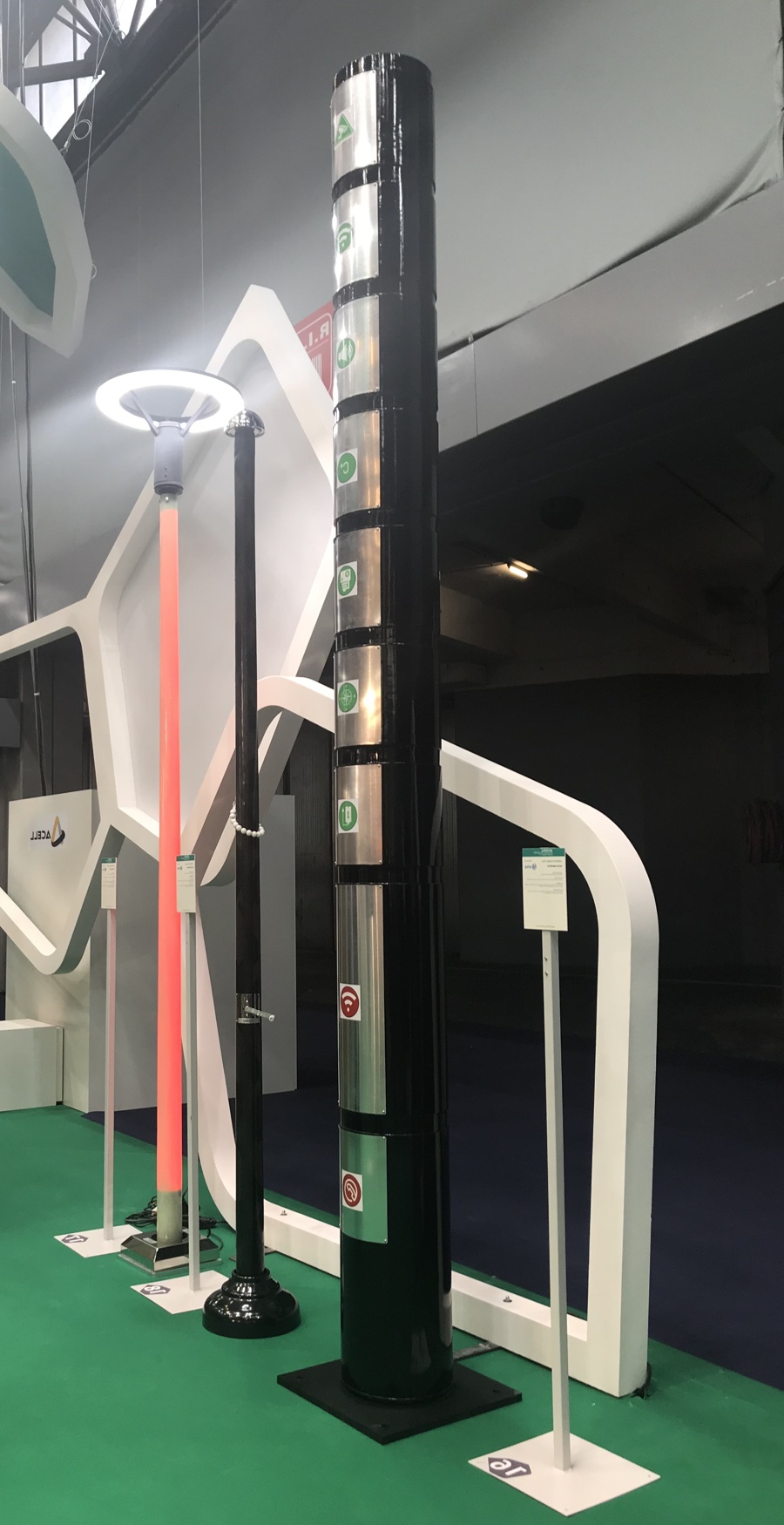5G-enabled smart cities bring opportunities for composites materials

Composite materials are well known for their high strength, lightweight properties and design freedoms they can give. But an emerging factor which will favour their adoption further is transparency to radio frequency (RF) signals.
This is according to a new report from the European Pultrusion Technology Association (EPTA).
To realise the potential of 5G, the next-generation mobile network, a dense network of 5G small cells will be needed, bringing opportunities for pultruded composites in 5G radomes and base stations as well as concepts such as smart lighting poles. Novel materials which offer lower 5G signal loss than traditional construction materials will also be needed to deliver reliable in-building 5G services.
The EPTA industry briefing, An expanded role for pultruded composites in 5G cities, outlines how the roll-out of 5G will drive increased adoption of composite materials in urban infrastructure.
The future is smart
More than half of the world's population already lives in urban areas, and this is expected to rise to 70% by 2025.
Future cities will be smarter, implementing digital and data-driven solutions to help them operate more efficiently and provide new services. A new digital infrastructure and fast, high capacity networks will be essential to meet these ever-growing needs for data transmission. 5G is the proposed solution and will be key to exploiting the vast potential of the Internet of Things.
5G services are expected to be widely available by 2025, but their widespread deployment in cities presents challenges. The enabler for top level 5G performance will be the millimetre wave (mmWave) spectrum above 24 GHz and while these high frequency waves can carry more data than current mobile networks, they travel over much shorter distances.
In environments where network traffic is high 5G technology will need to rely on ‘small cells’ – low-power micro base stations (cell towers) which transmit and receive signals locally. This will require the integration of thousands of 5G small cells into already complex city infrastructure.
To enable fast roll of 5G services and mitigate costs it is likely that the small 5G antennas and base stations will initially be ‘hidden in plain sight’ on existing urban infrastructure and street furniture such as light poles, traffic lights, bus shelters, advertising boards, and walls. This will create demand for antenna shrouds and radomes, base station enclosures and concealment solutions, creating an opportunity for composite materials.
Pultruded glass fibre composite profiles are almost ‘invisible’ to RF waves and have been used in telecommunications applications for many years.
Different fibres and resins can be combined to deliver a range of dielectric properties suitable for various end-use applications, and developments are targeting lower dielectric constants and loss tangents to enable better performance with higher frequency signals.
Pultrusion is ideal for high volume, cost effective manufacturing of construction elements ranging from simple flat panels, posts, tubes and cylindrical antenna radomes and shrouds, to more complex custom designed structures. In addition to minimising 5G signal attenuation and interference, robust, durable composite structures offer easy to install, lightweight solutions with low maintenance requirements.

Connected light poles
The EPTA report highlights an emerging solution for 5G small cells which is set for strong growth – ‘connected light poles’ or ‘smart poles.’
These integrate energy efficient LED lighting with interior space for 5G hardware and antennas from multiple OEMs in one pole. Designs can be tailored to suit different cityscapes.
Other devices such as cameras, sensors and display screens can also be ‘plugged in,’ turning the simple light pole into a multi-functional hub and a potential revenue generator for cities. While steel is currently the dominant material used to manufacture utility poles, authorities worldwide are increasingly adopting pultruded composite poles which are corrosion resistant, easier to install and offer a longer service life with lower lifecycle costs.
The LuxTurrim5G project on Smart City Digital Ecosystem Creation, driven by Nokia Bell Labs, is one initiative developing pultruded composite light poles with integrated miniaturised 5G antennas and base stations.
As well as providing energy-efficient lighting, the poles will create a high-capacity 5G data transmission network and incorporate sensors, information displays, cameras and other devices in order to trial a variety of services and business concepts.
The LuxTurrim5G project partners are also comparing 5G signal loss through composite building elements with that through conventional building materials since short wavelength 5G signals have poor in-building penetration. The increased use of energy efficient building materials such as spectrally selective glazing will exacerbate this problem. Pultruded building elements such as window frames and doors, beams, panels and architectural facades can deliver improved in-building mmWave signal penetration together with excellent thermal insulation.
Opportunities for inventive businesses
The increasing importance of RF transparent materials for next generation city infrastructure opens up a new market opportunity for the composites industry far beyond the scale of current construction applications. Composite materials with tailored mechanical and dielectric properties can deliver effective solutions for high-performance 5G applications. 5G mmWave antenna radomes and base stations need novel RF materials to minimise signal losses and increase network efficiency. Smart lighting pole networks will enable mobile operators to densify their networks without impacting the streetscape, while energy efficient building systems with improved RF signal penetration present further opportunities for innovative designers.
“Composite materials offer many properties that make them attractive construction materials for future cities, including high strength and stiffness, low weight, corrosion resistance, thermal insulation and design freedom,“ notes Dr Elmar Witten, Secretary of EPTA. “The need to ensure reliable 5G coverage in buildings and outside brings additional motivation for the integration of RF-transparent pultruded composites into urban design.“







